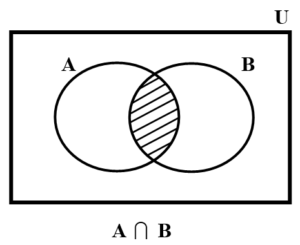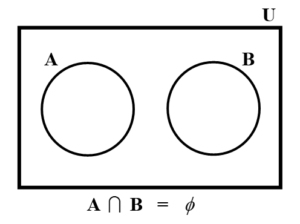Blog
Event
- June 5, 2020
- Category: Event
☼ Event : The result of an experiment are known as events:
e.g. (i) If a coin is tossed head ( H ) and tail ( T ) are two different events.
(ii) 1, 2, 3, 4, 5, 6 are different events when a die is thrown.
If A is an event and S is a sample space then A is a subset of S. ( i.e. A
S )
Generally the events are denoted by A, B, C or A1, A2, A3 etc.
If A =
, then A is called impossible event.
If A = S, then A is called certain ( or sure ) event.
■ Complementary event : The complement of an event A is the aggregate of all the sample points of sample space S which do not belong to A. It is denoted by A’ or or A .

e.g. If A is an event of getting an odd number when a die is thrown, then event of not getting an odd number i.e. getting an even number is the complement of event A and it is denoted by A’ or or
.
■ Union of two events : The union of two events A and B is denoted by A B. It is the aggregate of all sample points belonging to either A or B or both.

e.g. If A is an event that no. of students play cricket and B is an event that no. of students play hockey then A B represents an event that no. of students play either cricket or hockey or both.
■ Intersection of two events : The intersection two events A and B is denoted by A B. It is the aggregate of all sample points belonging to A and B both. When two events A and B occur simultaneously we say that A
B has occurred.

e.g. If A is an event that no. of students play cricket and B is an event that no. of students play hockey, then A B represents an event that no. of students play cricket and hockey both.
■ Difference of events : The difference of two events A and B is the event that A happens and B does not happen. It is denoted by A – B. A – B = A B’

e.g. If A is an event that a student plays cricket and B is an event that a student plays hockey, then A – B denotes an event that a student plays only cricket.
■ Mutually exclusive events : The intersection of two events A and B is null set, then they are called mutually exclusive events. i.e. A B =

e.g. If A is an event that a student pass in the exam and B is an event that a student fail in the exam, then A and B are called mutually exclusive events.
■ Exhaustive events : If all possible outcomes of an experiment are considered, the outcomes are said to be exhaustive. The exhaustive events are nothing but all the sample points in the sample space.
e.g. In throwing a die 1, 2, 3, 4, 5, 6 are exhaustive events.
■ Equally likely events : Events are said to be equally likely if we have no reason to believe that one event is preferable to the others.
e.g. Head ( H ) and Tail ( T ) are equally likely events in tossing a coin.
■ Favourable cases : The number of sample points favourable to the happening of an event A are known as favourable cases of A
e.g. In drawing a card from a pack of 52 cards, the favourable cases for getting.
■ Independent events : Events are said to be independent if the happening of one event does not depend upon the happening or non-happening of other events.
e.g. (i) When a coin is tossing two times, the event of getting head in the first throw and that of getting head in the second throw are independent events. Here the result of the second throw does not depend upon the result of the first throw.
(ii) Similarly the event of getting 3 when a die is thrown and getting a spade from a pack of cards are independent events.
